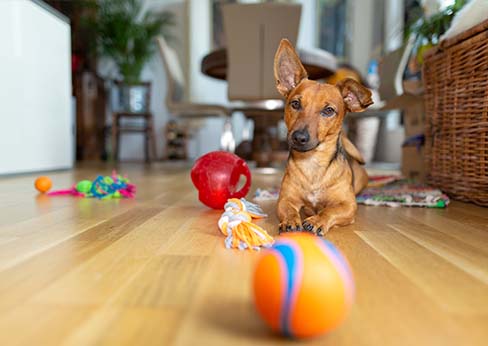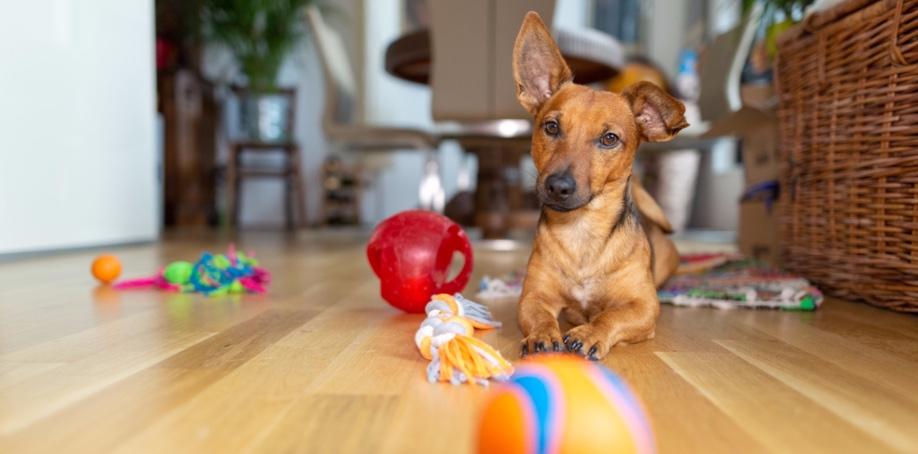
You’ve started to prepare for the day you get to bring your new dog home. You’ve got food, treats, toys, bedding, a leash, a collar, maybe even a kennel. You’ve begun to think about what types of rules you want to enforce and when you’ll begin training your dog, but you’re worried that you might be forgetting something important.
In this blog, we’re going to discuss some important questions that you need to ask yourself prior to bringing home your new four-legged family member.
Should I allow my dog on the furniture?
If you enjoy cuddling with your dog and aren’t worried about fur or scratches on your furniture, then let them up. But do not initially allow them on the furniture only to change the rule on them a month or two down the road. This will create confusion and frustration in both of you.
Is there any reason to why a dog should not be allowed on the furniture?
Dog’s are social animals and you may notice that your dog wants to be on your bed or sofa with you. You may even notice that the dog prefers these areas even if you’re not around. Allowing your dog on your furniture does not mean that you are creating a dominance problem and it is not counterintuitive to training.
The question is really simple, do you want your dog on the furniture? If you are worried about furniture getting dirty (it will) or possibly damaged (it might), then training your dog to stay off the furniture is the path for you. But if that doesn’t bother you, enjoy snuggling with your pet!
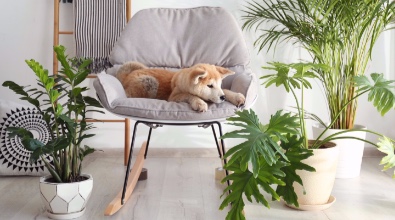
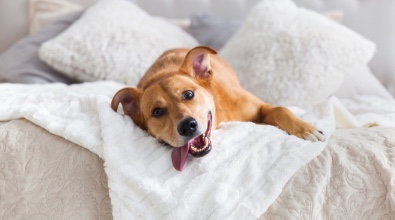
Should I share my bed with my dog?
Being near an animal can increase our levels of oxytocin, also known as the “love hormone”. Some owners like the rhythmic sound of their animal’s breathing, and claim that it helps them get to sleep faster.
Sleeping with a dog can make you feel safe, as larger dogs could fend off an intruder, and any size dog will start barking if anyone tries to break into your house or apartment. I found this particularly calming when I was younger and lived alone. If I woke up in the middle of the night thinking I heard a noise, I studied my dog sleeping next to me. If they were alert, then there was cause for concern. If they were still sleeping or resting comfortably, then I knew I could go back to sleep.

For all the benefits of having a pet, it’s important to be aware of the possible risks, and how to prevent problems:
- In rare cases that your animal starts to show signs of aggression associated with sleeping in the same bed, provide the animal their own bed or sleeping space and consult with a veterinary behaviorist
- For cat owners, leaving your bedroom door open is advisable as they are nocturnal and will often not spend the entire night in bed.
- If you have allergies, don’t want pet hair in your bed, or to be woken up during the night because they’re disturbing you, buy or create an area for your animal to sleep in near your bed.
- If you’re waking up hot, and your pet is in contact with you, it’s a good idea to sleep with a little bit of space between you. To get restful sleep, your body temperature will drop, and staying warm can prevent restful sleep, hence the popularity of mattresses advertising “cooling” mattresses.
If You Need to Move Your Pet to Another Room
One reason your pet may enjoy sleeping in your bed is that they’re in a great strategic position where they can see everything happening around them. They may also like the extra warmth they get from sleeping with their owners.
If for whatever reason you need them to not sleep in the bed with you, it’s recommended that you do it gradually. Before you start the transition, add a blanket to your bed that they sleep on that you can later add to their new sleep spot so they associate sleep with their new bed.
Start by having them sleep in their own crate or bed near your bed. You can put toys or treats in their new space so they associate their new space with things they like, and not feel that it’s a punishment. Gradually move their bed further from yours, until you can move them into another room.
Who should I hire before bringing my new dog home?
Find a good vet, groomer, and dog walker before you bring your dog home. The sooner you can introduce him to these three; the better those experiences will be for him when he has to go visit them. You don’t want his first visit with the vet to be getting neutered, or his first visit to the groomer to be getting his nails clipped. This can ensure that they are always nervous and leery about visiting those places, which will create frustration for everyone involved.
Groomer
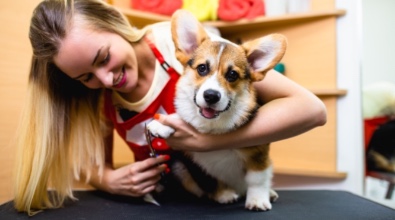
All dogs have basic hygiene needs that need to be met. They need to be bathed and have their nails trimmed regularly, but some dogs also need to have their fur cut to avoid matting or to keep them fresh and cool in the summer. If using a vet or groomer to get these needs met, I cannot stress this enough:
Introduce your dog or puppy to the vet and groomer BEFORE they need to go there. Many vets will allow you to just come in with your dog or puppy to get extra love and treats. Groomers will let you come in to get brushed or just loved on. You want your dog to be relaxed when his first official visit happens. It is also important to find a groomer who is patient and takes the needed time with your dog. This can be hard to find, but if you feel like your groomer is being too rough and is rushing through, say something or find a new one.
Vet
Your veterinarian is the first step in keeping your dog healthy. Veterinarians take everything into account, from nutrition to cancer prevention, and they can help keep your dog alive and healthy for a much longer time. It is absolutely important to find a veterinarian that you trust before you bring your dog to meet them.
You do not want to bring your dog in just to see that you do not like the veterinarian. That can have an aversive reaction to your new dog. Ideally, you should find a veterinarian that you will be with for the rest of the dog’s life. This way your veterinarian will be able to tell when something is different in your dog’s health. They will know your dog’s normal health and be able to see any changes.
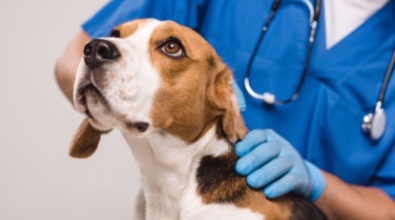
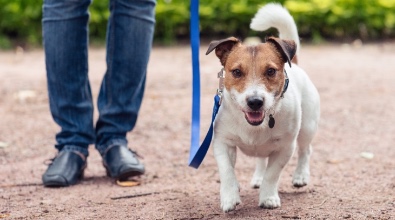
Pet Sitter
Emergencies happen all the time. When I spent my early years as a dog walker/pet sitter, I would have many calls from people who have had a family emergency and were not able to get home to their dog. I was not able to help these people because I had never met the dog.
It can be very dangerous to enter a home when you and the dog do not know each other. And most importantly, I did not have a key to the house. Meet a pet sitter before you need them so that they will have access to your home, will know your dog, and be prepared to help you if you need them.
Who is going to be responsible for the new dog?
Primary Caregiver
Decide who will be the primary caregiver for the dog. Someone needs to be in charge of making sure that he is fed and walked, and will take notice of any changes in his health. As kids grow, their interest in the dog will change, so make sure that you’ve got a “chain of command” when it comes to the care of your new family member.
The Whole Family
Since dogs are unable to take care of themselves it is important for pet owners to make sure their pet’s needs are being met, such as exercise, feeding, bathing, and vet care. In our busy everyday lives, our dogs can sometimes be forgotten. Walks are skipped, meals are missed, and symptoms can go unnoticed. One person in the house needs to be responsible for the dog or puppy, but the rest of the family needs to be checking in and staying apprised of any changes as well.
Children as Caregivers
Children can benefit so much from owning a dog, but they cannot always be responsible for one. Plus, their interests change so quickly! You also have to consider that your child might go to college or move out into a place that does not allow dogs.
Additionally, sports and extracurricular activities can also eat up a lot of time that is needed to take care of a dog. Age plays a big factor in how much responsibility a child can have in taking care of a dog. Young children may not be able to exercise their new friend properly, but are able to feed, water, and help bathe them. An adult must be ready to take on the responsibility to make sure the dog or puppy is being properly cared for.
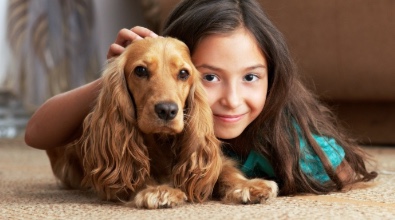
Conclusion
Adopting a dog is a huge responsibility, and there are a lot of things to consider prior to bringing them home. This is not a decision that you should take lightly or make on a whim. Snap decisions can lead to you having to return your dog to the shelter because you weren’t properly prepared to care for him. That’s not good for anyone and can have a severe negative impact on the dog. So please make sure that you’re really digging in and taking the time to research your dog and his or her care needs prior to bringing them home – or even beginning the adoption process.
Yes, we want you to adopt a dog, but we also want to make sure that it’s forever. Being prepared for all that comes with adopting a dog will ensure your success and create greater chances for a peaceful and happy home.





